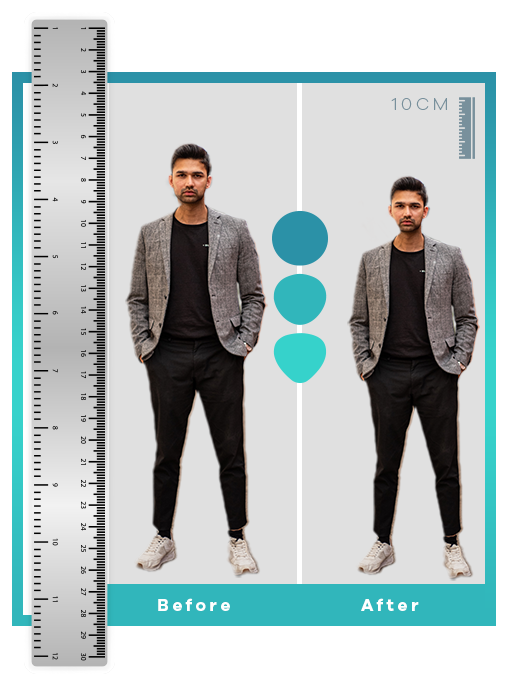Free Consultation
Fill out the form to get a quick quote.
Free Consultation
Fill out the form to get a quick quote.
Renate Healthcare
Limb Extension
Lengthening surgery defines the lengthening of the relevant bone by various surgical procedures by taking advantage of the growth potential of the bones. The lengthened bones can be summarized as upper extremity humerus (upper arm), radius-ulna (forearm), femur (thigh), tibia (tibia), metatarsals (scallops of the foot).
Why Renate Healthcare?
With our expert staff, we can be reached 24 hours a day, 7 days a week about the risks you may encounter during the entire treatment process, possible complications and your treatments that will be terminated in a healthy way, and we help you whenever you.

Limb Extension Method
What is done as a procedure in surgeries?
The bone to be extended is divided into two by the method called osteotomy, and the distance between these two parts is gradually extended with various orthopedic devices.
There are three options here;
- External fixator (implants outside the skin): A method in which bone lengthening is performed by means of metal implants placed through the skin in the upper and lower parts of the osteotomy bone.
- In addition to the external fixator, the extension made over the fixator (thanks to the implant visible from the outside of the skin) by placing a non-extensible nail into the bone
- Internal Rod (extending nail – PRECICE): A method using motor-containing nails placed inside the osteotomy bone.In this method, the patient does not see an implant outside the skin, the lengthening is done comfortably over this nail.
In this method, the patient does not see an implant outside the skin, the lengthening is done comfortably over this nail. In our clinic, this method is used first in eligible patients.
What are the advantages and disadvantages of the PRECICE (extending nail) method?
Since the surgery is performed with the closed method, it is an aesthetically perfect result. For the placement of nails-screws and for osteotomy, 3-4 incisions of 2-3 cm are made and these incisions are stitched with aesthetic methods.
The risk of infection is much less than other methods.
It is the most comfortable and preferred method by us.
It has disadvantages such as a more costly process and the need to use a device for daily extensions.
BEST IN TURKEY
26+
COUNTRY
WE TAKE PATIENTS FROM DIFFERENT REGIONS FOR THE BEST TREATMENT
10.000+
PATIENTS
EVERY YEAR, MORE THAN A THOUSAND PATIENTS VISIT US.
99%
SUCCESS RATE
WE LOVE OUR HAPPY PATIENTS.
100%
HAPPY PATIENT
WE FOLLOW OUR PATIENTS EVEN WHEN THEY RETURN.
Before/After



Who is lengthening surgery applied for?
In case of height differences in bones due to a previous trauma
- Problems in growth cartilages (tumor-trauma, etc.)
- Equalization of congenital (congenital) length-shortness differences
- In the treatment of dwarfism
- In the treatment of complications due to osteomyelitis (bone infection)
Who can not have lengthening surgery?
If the general health of the patient is not suitable for surgery, If there is bleeding or coagulation disorders, If there is an active bone infection If there is a medical disease that prevents anesthesia, If the patient’s psychology is not suitable for the operation and the following process, lengthening surgeries are not performed.
Is lengthening surgery risky?
Lengthening surgeries, like other possible surgeries, involve some risks of complications. There are risks such as infection, bleeding and clotting, albeit low.
How does the process before lengthening surgeries work?
Lengthening surgeries are surgeries where planning and timing are very important. Your clinician will inform you in detail about what to do in this process. In this process, imaging such as radiological examinations (x-ray, x-rays, computed tomography or MR (magnetic resonance) and some blood tests will be required. The examinations may vary depending on the bone area where the surgery is performed and the need for the surgery.
Happy Patients




Fill in the Form
Contact You
Let Your Treatment Begin!

Translation by
expert doctors.
Get the best treatment
with Renate Healthcare!
Free Consultation
Fill out the form to get a quick quote.
Renate Healthcare
Height Extension Treatment
Lengthening surgeries are performed under general anesthesia. Before the operation, the patient is evaluated by anesthesiology specialists and their suitability for the operation is planned. The patients who are found suitable come to the operating room after the relevant examinations and examinations and the surgery is performed by the specialist surgeon. According to the planning of the surgery, crutches, orthopedic devices, wheelchairs, etc. Auxiliary equipment may be required.
At the end of the surgery, the patient is taken to the wake-up room. Necessary drugs and medications are administered to prevent pain, and after the patient's recovery is completed, he or she is directed to his room in the service.
Nurses, caregivers and physiotherapists take part in service care. On the other hand, the patient needs a companion in the process of returning to his daily activities. Although this period may vary from person to person and according to the surgical site, it can be considered as the first few weeks.
In lengthening surgeries where elongated nails are used, the patient is seated and walking in a controlled manner the day after the surgery. Although the return to normal life may vary from person to person, it can be considered as an average of 6-8 weeks. Some activities (such as long walks, some sports activities) may be restricted by the clinician during the treatment process. It can be considered as an average of 6-9 months, as it will include the complete return to real life (release of all kinds of activities), the end of the elongation, the completion of the union, and the removal of the nail. |
After the surgery, 3-5 days of hospitalization is required for follow-ups such as wound follow-up, pain management, walking training and exercises, and pain management.
In lengthening procedures where elongated nails are used, the amount of elongation varies with which bone (thigh-shin bone) the nail is made. It can be considered as an average of 6-8 cm for the tibia, and an average of 10-12 cm for the thigh bone. In some cases, additional extensions can be made by changing the nail after the maximum elongation degree of the nail is completed. |
In surgeries where elongated nails are used, 0.33 mm lengthening is performed 3 times a day with the inserted nails, resulting in 1 mm elongation every day. For example, if a 6 cm extension is planned, the elongation process will take up to 60 days.








